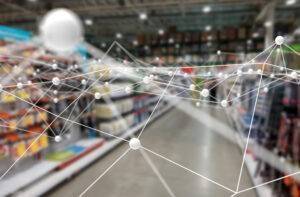From fixed to dynamic: How CPG brands can take advantage of the gig economy for merchandising success
From a school teacher who is also an Uber driver to a stay-at-home parent who stocks supermarket shelves on occasion, millions of Americans are taking advantage of the gig economy. This is great news for CPG brands looking to ramp up in-store merchandising, but can spell trouble for brands still relying on traditional merchandising agencies.
Americans are quitting full-time jobs for better paying gig work
Currently, more than a third of Americans (36%) are involved in performing various kinds of non-permanent jobs, including short-term or temporary gigs. On the flipside, the US labor market has seen major staffing challenges with people resigning full-time jobs in droves. Interestingly, the bulk of these resignations were so that people could take up higher paying jobs.
This means workers are not only available in the US, they are skilled and know their worth enough not to settle for lower pay.
Dynamic Merchandising for a dynamic industry
The desire of workers to have flexibility in their lives while earning more for the work they do has led to a massive surge in the gig economy.
This is great news for CPG brands, as they often need external support for executing in-store merchandising to free up their own employees’ time for more strategic tasks. Trax Dynamic Merchandising is the ideal solution for such CPGs.
An on-demand fleet of merchandisers known as the Flexforce is activated when a need arises, so brands can have all their merchandising tasks completed by skilled workers. Here’s how Dynamic Merchandising powered by Flexforce benefits brands:
Skilled workers, strict quality control: Trax conducts a rigorous onboarding process with all contract workers before they can perform a field visit for a brand. All visits are verified before they can be determined “complete” for the client. This way, any unskilled workers are immediately weeded out and unsatisfactory work is re-assigned to a different contractor. Work is also given to contractors who have more expertise in that area. For instance, some may be more skilled in resets , while others in activation.
Customized task lists: The Trax Flexforce is given a task list on arrival at the store rather than checking things off a pre-determined list. In fact, workers often end up doing jobs that aren’t even on the brand’s radar. This is because on arrival at a store, the merchandiser uses the Trax IR (image recognition) app to record the state of the shelves, compares it with the desired state, and then applies customized rules to generate a list of tasks to be performed in real-time.
Deploy anywhere, quickly: Another benefit of the paid contractors used by Trax is that the Flexforce works on assigned tasks, allowing for flexibility in deployment, including in rural areas. The on-demand nature of the workers also guarantees agility and allows for quick responses to changing requirements and onboarding of new clients in a matter of days. So, when demand fluctuations occur, labor shortages won’t affect your brand because you will always have a flexible workforce at hand to perform the job, no matter the time, task or location.
Pay for work done: Because the Flexforce is paid for tasks completed instead of time taken, brands are insulated against costs lost to store-level inefficiencies. So, if a worker needs to first spend time tracking down goods from a backroom, the cost won’t be borne by you. This also makes it easier to predict and build in costs for merchandising during early budget planning stages.
Why traditional agencies are no longer viable merchandising partners for CPGs
Brands typically rely on agencies with a fixed workforce to conduct merchandising visits. However, the fixed merchandisers such agencies use already have other tasks on hand, so deployment can take weeks. This situation is made worse with the ongoing labor shortages across the US.
And when they are finally despatched, the reps are primarily focused on executing pre-determined tasks as they lack the store and shelf data necessary to fully comprehend the opportunities and challenges at hand. Moreover, since they usually work with multiple brands simultaneously, their attention isn’t solely devoted to your brand.
The fixed workforce of traditional agencies also primarily concentrates on larger retail establishments like Target or Walmart, or accounts overseen by head offices. Consequently, they are unable to offer comprehensive merchandising services to CPG brands that require support in convenience stores. Dispatching representatives to smaller stores or rural areas simply isn’t feasible for them.
Lastly, due to their inflexible schedules, the feedback loop takes a considerable amount of time to reach the brand, rendering the information outdated by the time it becomes available. In contrast, brands get access to the insights collected by Trax within 24 hours.
With experienced merchandisers choosing to work freelance, CPG brands that use flexible merchandising can take advantage of their impressive skills, cost and time efficiencies, and opportunities that are presented in real time.
Download our whitepaper Snack wars – Why CPGs must improve their in-store execution to remain agile to learn more about the benefits of Trax Dynamic Merchandising and the power of the gig economy.



